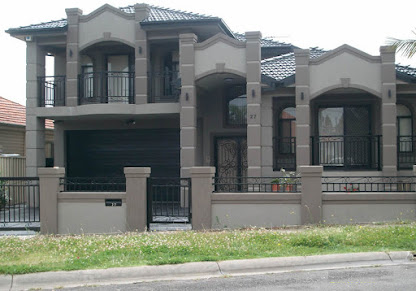Is It Possible To Fix The Cement Render?
Traditional lime renders on old buildings should never be fixed with cement because it prevents moisture in the wall from evaporating, forcing it out to the edges of the new patch and eventually causing the render to fail along the edges of the repair.
The exterior walls of a house serve as the first line of defence for your dwellings. They not only keep the building standing, but they also keep the elements out of your home. They also keep the interiors warm and comfy when properly built and maintained.
Rendering is popular due to its durability and distinctive texture; but, it is not impervious to harm and can break rather readily if, for example, the house foundation sinks unevenly or new framing elements shift and shrink as they dry out.
If you detect a fracture in your rendering, no matter how little, you should have it repaired as soon as possible. Water will seep into the underlying structure through even the slightest holes in the render, eventually causing harm.
A sand and cement mixture is added to the bricks during the rendering process. This, in turn, helps to protect the walls while also improving their appearance. There are many different colours and textures to select from. To achieve the desired aesthetic, cement rendering can be customized utilizing a range of methods and materials.
Render Repair : How To Do It
Cement render repair being the first line of defence for your home, should be high on your list of maintenance tasks. Serious faults can arise if they are ignored. Keep an eye out for cracking or bulging render, as both suggest a problem. When touched, blown sections will sound hollow, and parts of the render may have broken off, exposing bare patches of the wall behind.
However, frost getting moisture trapped between the render and the wall is the most typical cause of render cracking and bulging. This is why minor hairline fractures should be filled as soon as they appear; otherwise, water penetrating through can freeze and expand, blowing the granosite rendering Sydney’s surface loose and causing wider fissures. Shrinkage cracking can also occur where the original render mix was too powerful.
In certain circumstances, missing render chunks are simply due to physical damage. In either case, if dampness becomes trapped under the surface, it can permeate solid walls, creating the conditions for widespread timber rot within the structure.
Render was previously applied in three layers that became progressively thinner as time went on; these layers were known as the render, float, and set coats.
Although rendering a large area requires skill, patching is a less difficult task. However, even with unskilled hands, 'invisible' repairs are difficult to do, so you may need to plan for the entire wall to be redecorated.
Traditional lime renders on old buildings should never be fixed with cement because it prevents moisture in the wall from evaporating, forcing it out to the edges of the new patch and eventually causing the render to fail along the edges of the repair.


Comments
Post a Comment